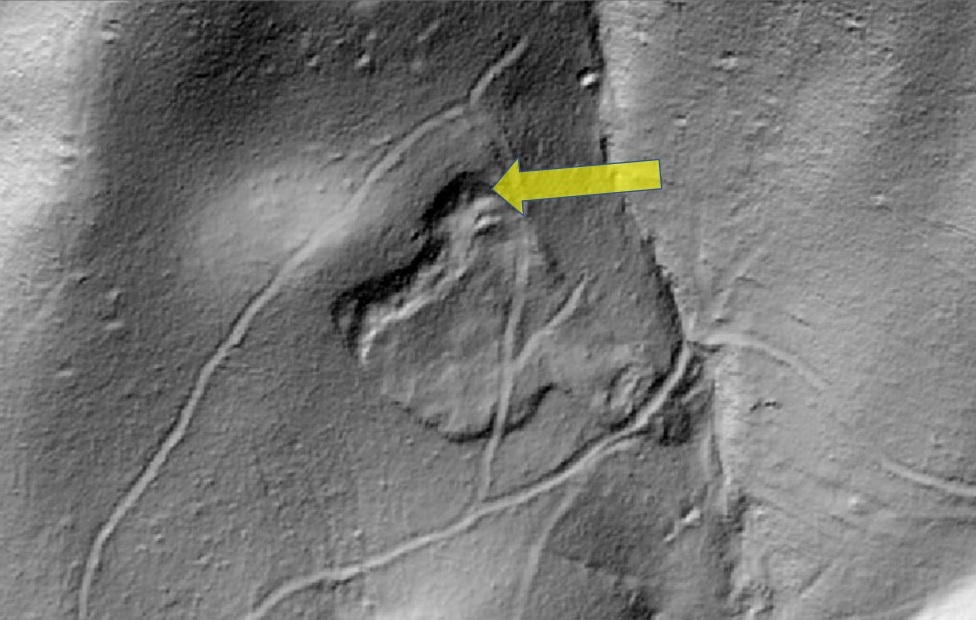
What does that landslide actually look like?
by Philip S. Prince
Lidar-derived imagery is a game-changer in the study of landslides and other slope movements, and it frequently produces dramatic visuals like the Rutherford County, North Carolina, debris slide shown below. The slide has developed in talus dominated by sillimanite schist, which is likely sliding atop underlying gneissic bedrock.
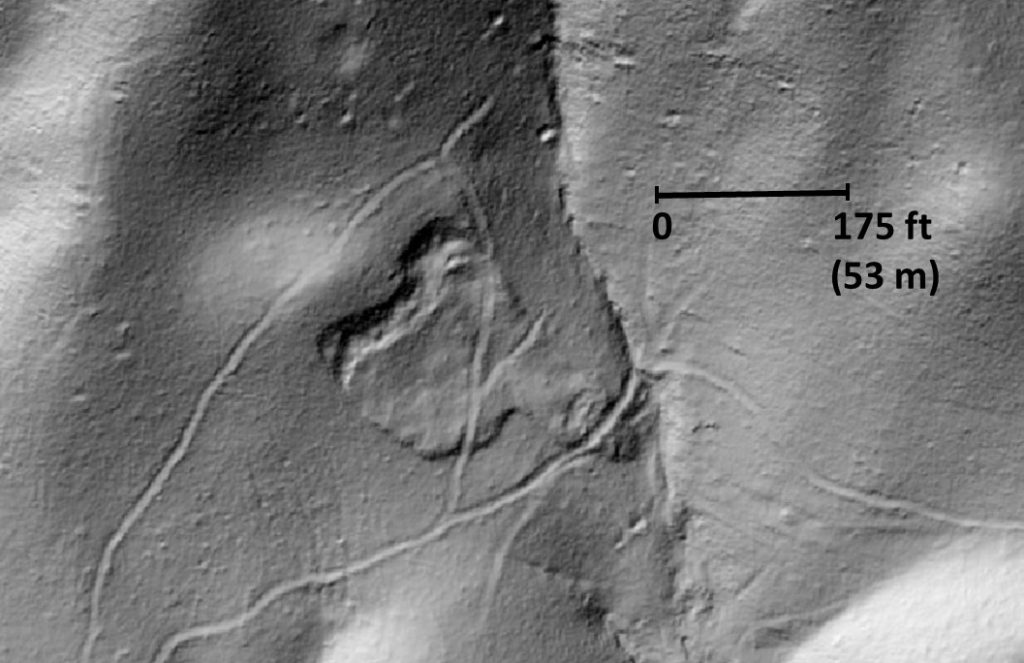
Over the past year of focused landslide mapping here in southern Appalachia, I have noted that slides that are this crisply defined in lidar hillshade are often found to be active upon field inspection, with soil-exposing scarps, ground ruptures and fissures, and trees back-rotating or being pushed over. The (very) humid temperate climate of the region is not well suited to preserving the fine details of many landslides, particularly when they do not involve intact bedrock masses. Numerous kinematic features are beautifully defined on the slide, with detail on the slide’s toe and laterals being particularly impressive and comparable with confirmed active slides in the area. The slide is equally dramatic using slope-shade imagery, which can offset bias effects related to lighting angle in hillshade imagery.
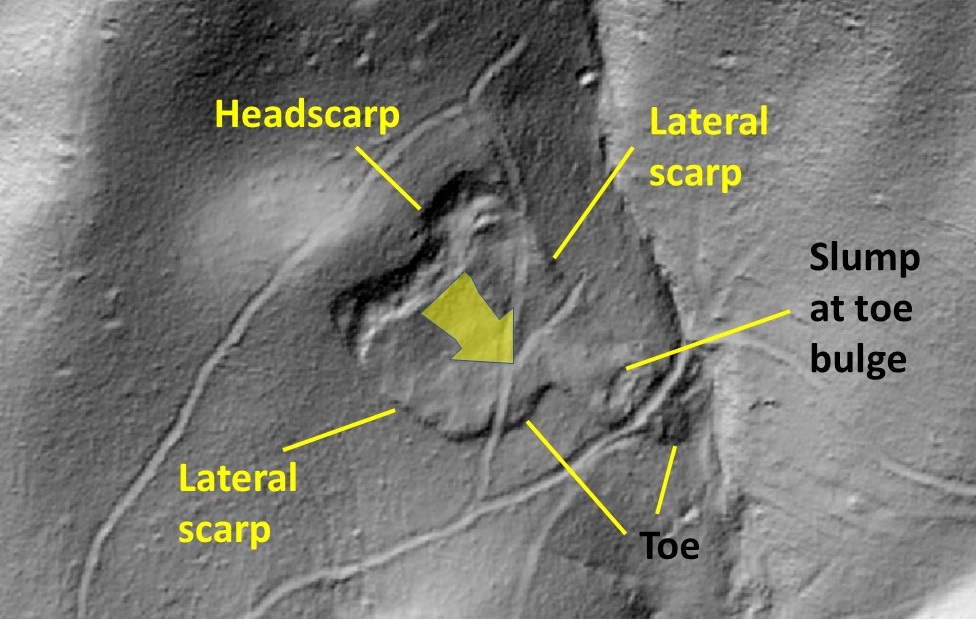
I recently visited this slide as part of my work with Appalachian Landslide Consultants (ALC), PLLC, and was surprised by its actual field expression. The following photographs show what the slide looks like in the field. The accompanying hillshade images show where each photograph was taken, with the points of the yellow arrows resting on the photographer’s position (this is to avoid covering the details of the slide with the arrow). Each arrow points in the direction the photographer was looking.
Surprisingly, no bare soil was exposed on the scarps of the slide. The headscarp is shown below. Up and right from the center of the photograph below, ALC geologist Aras Mann is seated on the scarp surface. Trees show minimal deformation here.

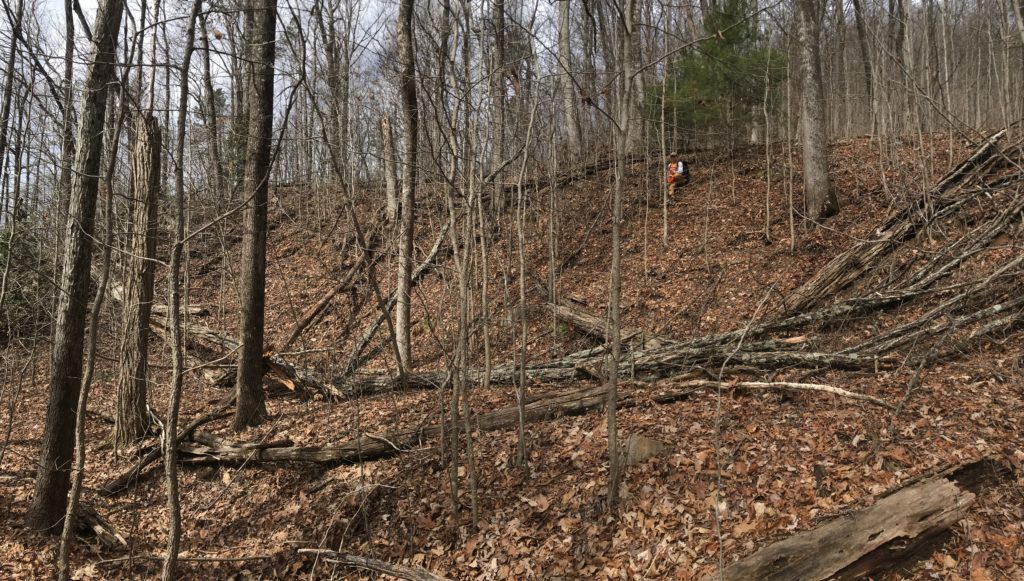
Many of the trees growing on the headscarp are very young, suggesting its re-vegetation may be quite recent. Even so, it is presently entirely vegetated with an O-horizon present everywhere.
The toe of the slide is impressively defined in lidar hillshade, but it is much more subtle from the ground surface. In the photograph below, Aras contemplates the surprising field appearance of the toe. The dashed yellow lines highlight the faint step on the land surface. The few leaning trees behind Aras are located just beyond the tip of the yellow arrow, where a portion of the toe appears to have slumped slightly due to oversteepening.
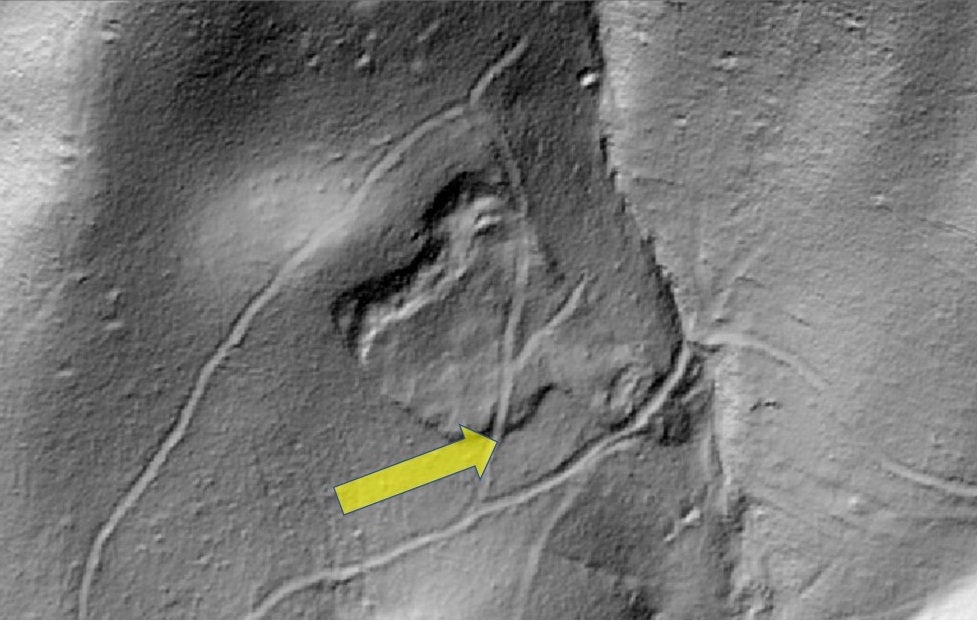
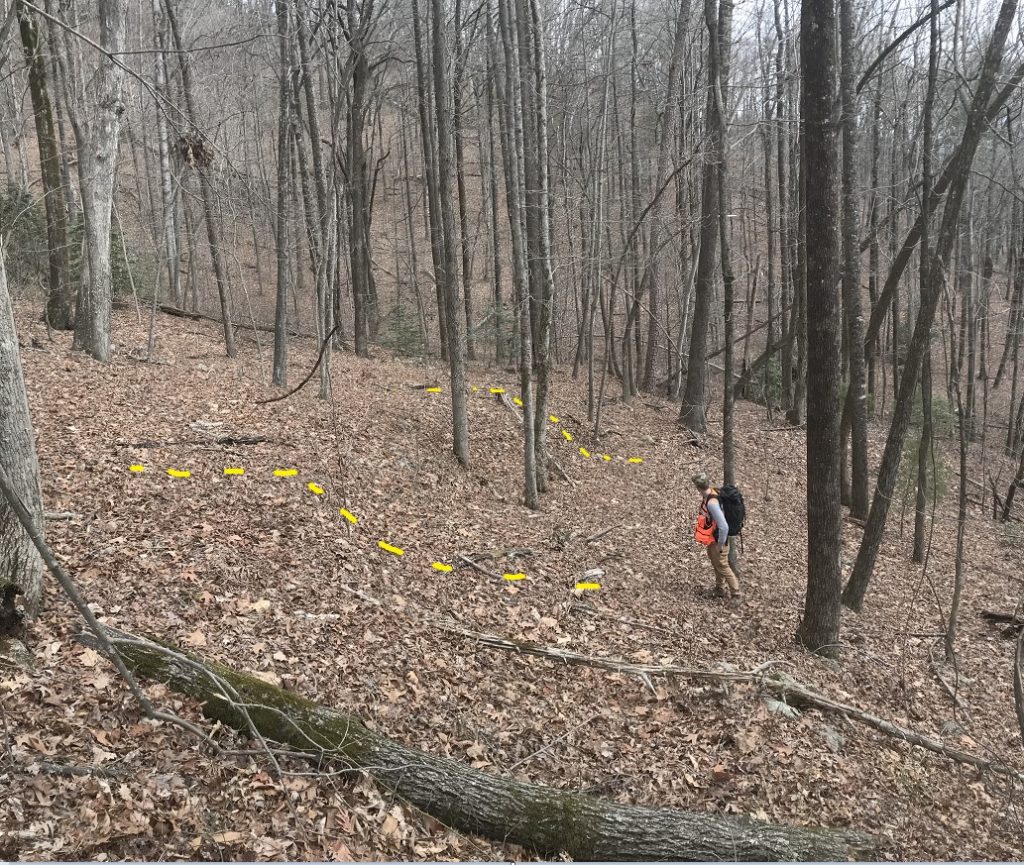
The toe bulge is certainly large enough to be noticed, particularly if one already knows that it is there. The bulge is about 6 feet (1.85 m) tall where it is crossed by the logging road. Note the two dead (or dying) trees at the right of the image…could they be evidence of creep within recent years?
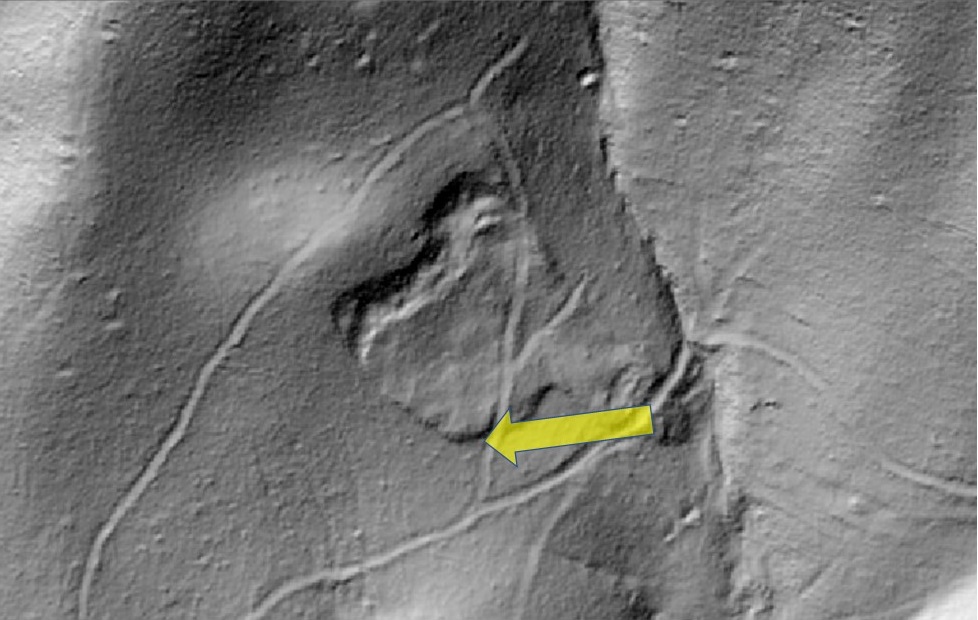
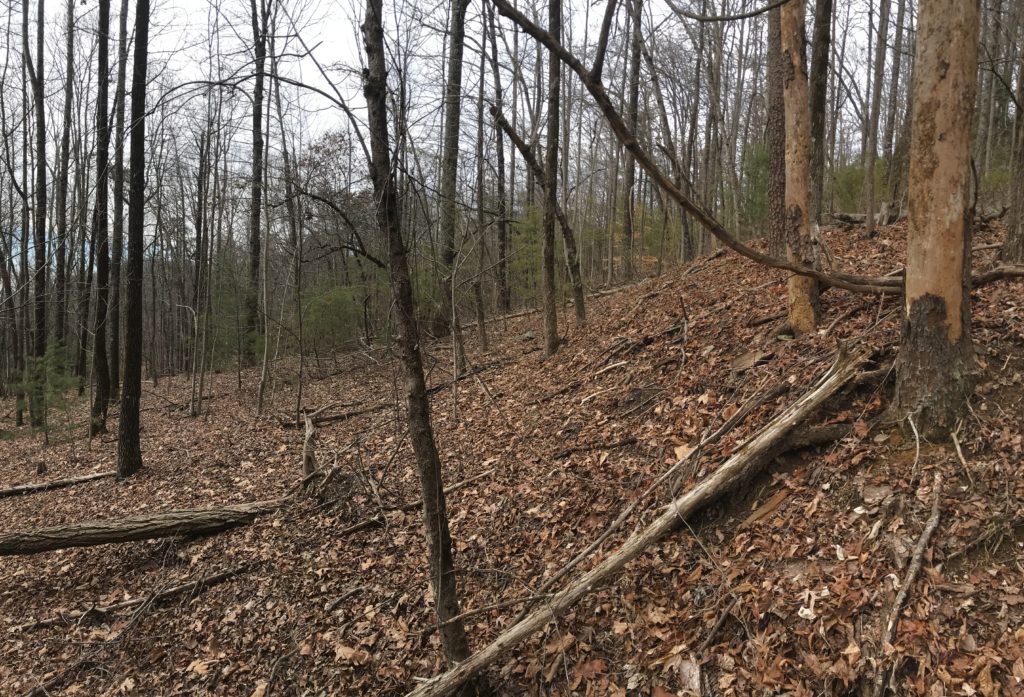
Notably, the logging road does not appear to have been deformed by any noticeable slide movement.
Looking back upslope toward the toe from a logging road further downslope, only a faint step in the landscape is visible. The photograph below was taken from the logging road (point of the arrow). Again, the yellow dashed lines highlight the step.

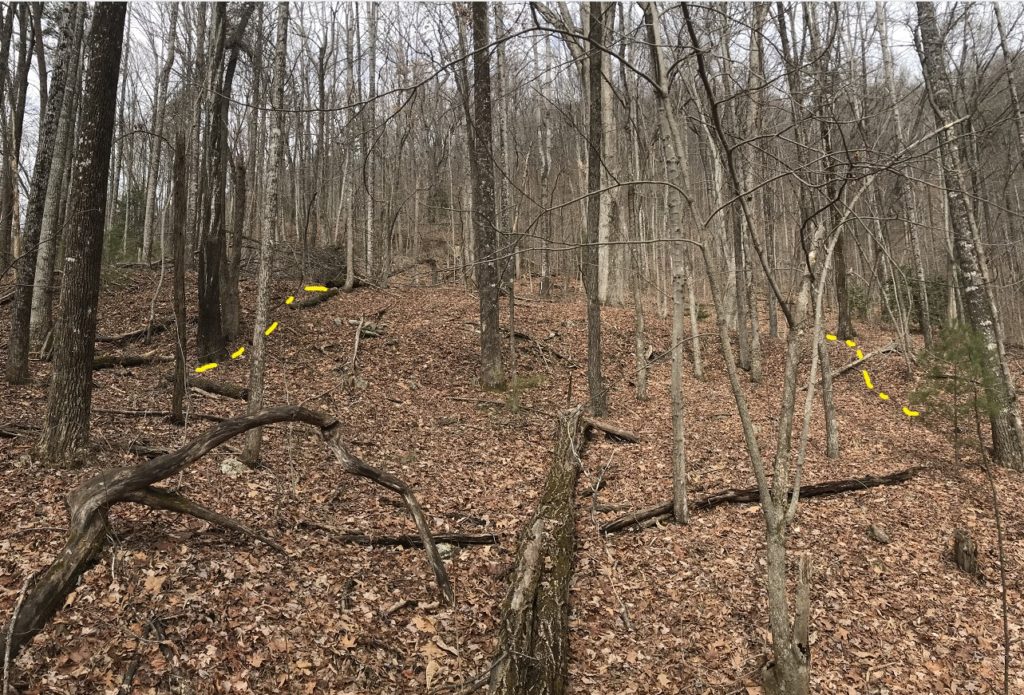
The outermost portion of the toe (lower right of the slide in the images) has slumped due to oversteepening. The resulting headscarp is visible in the landscape in the photograph below (dashed yellow lines again). Some fallen trees were present here, but I did not consider them obviously attributable to slide movement.
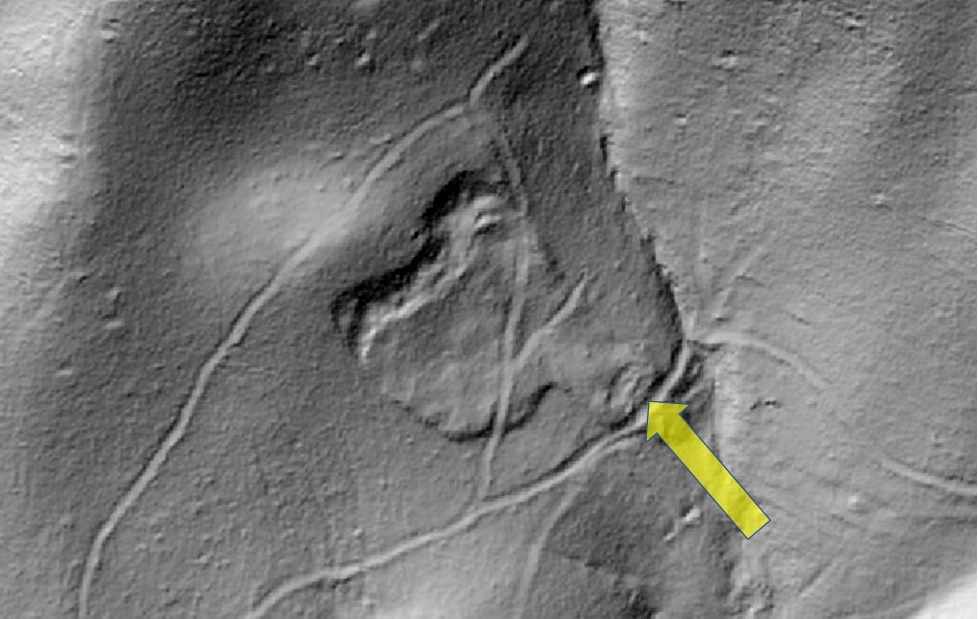
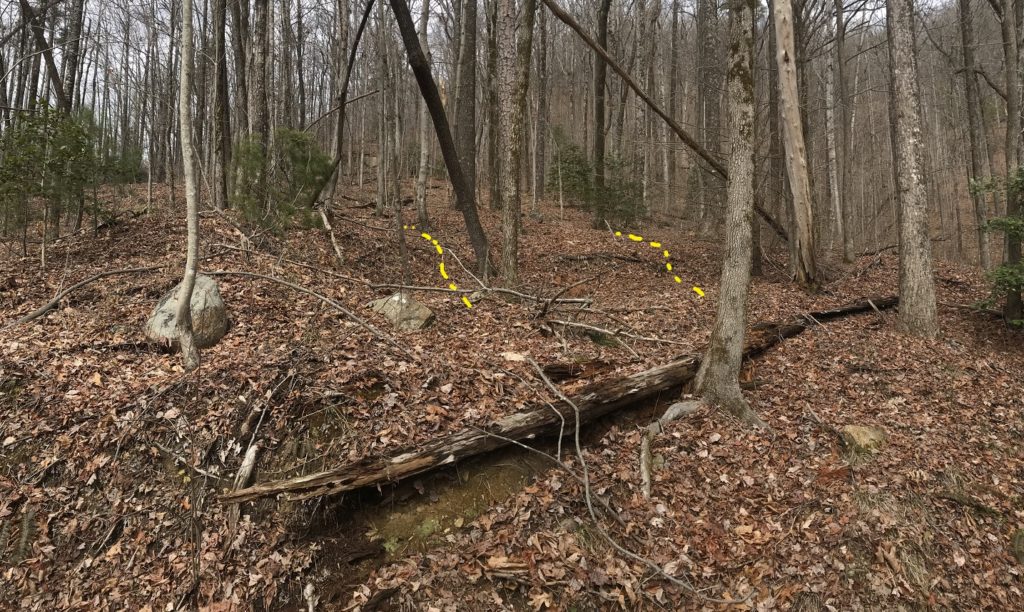
The transition from toe to left-lateral scarp was also surprisingly subtle. Again, the toe bulge was large enough to be noticeable, but the crisp lateral visible in lidar hillshade was mostly obstructed by tree growth.
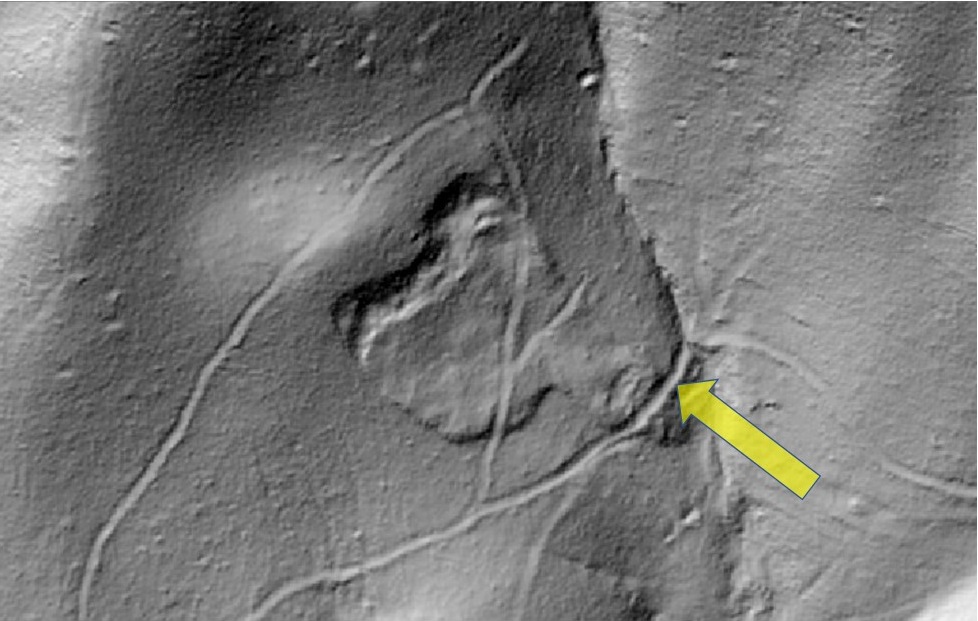
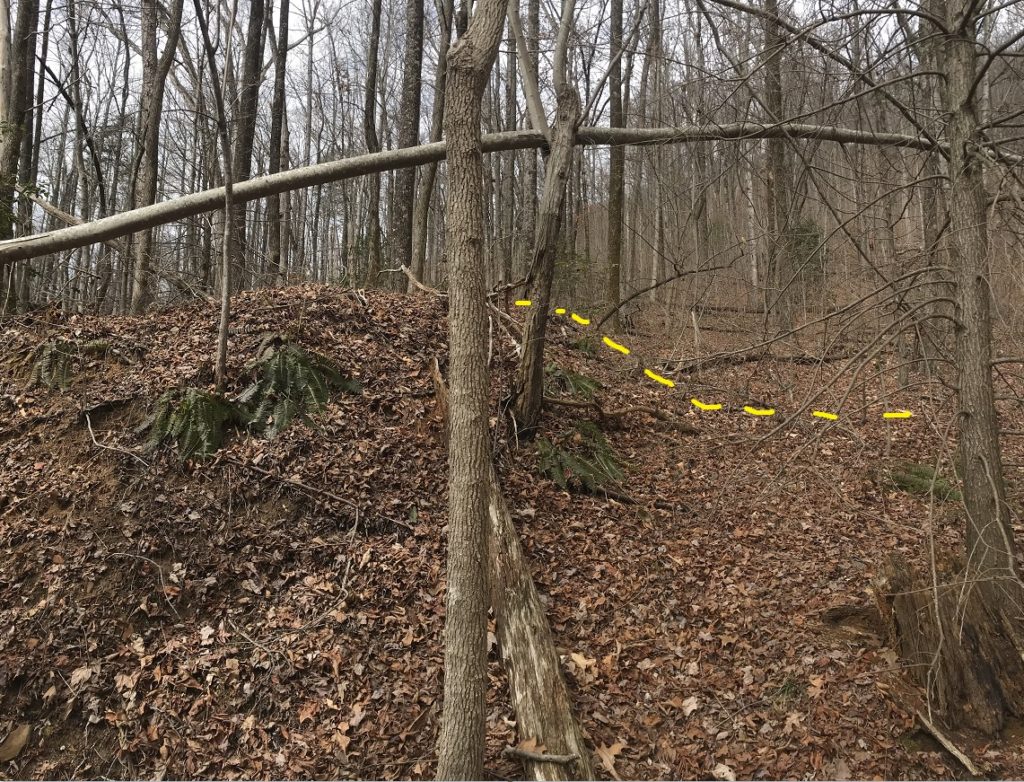
Interestingly, a similar pattern of dramatic lidar appearance and subtle field expression was observed elsewhere in the area. About 1,000 feet (300 m) northeast, another eye-catching (in lidar, at least) debris slide was found to be similarly vegetated. The slide described above is located down and left of center in the image below; its neighbor is pointed out just right of center.
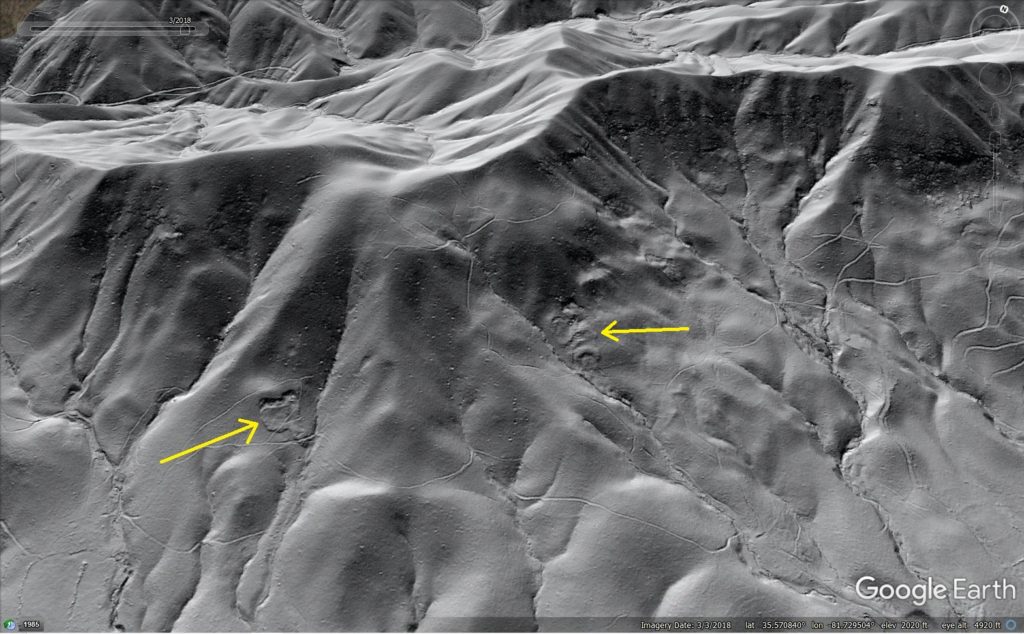
This is another debris slide with crisp scarps and interesting patterns related to extension in the interior of the slide, near the center of the image.
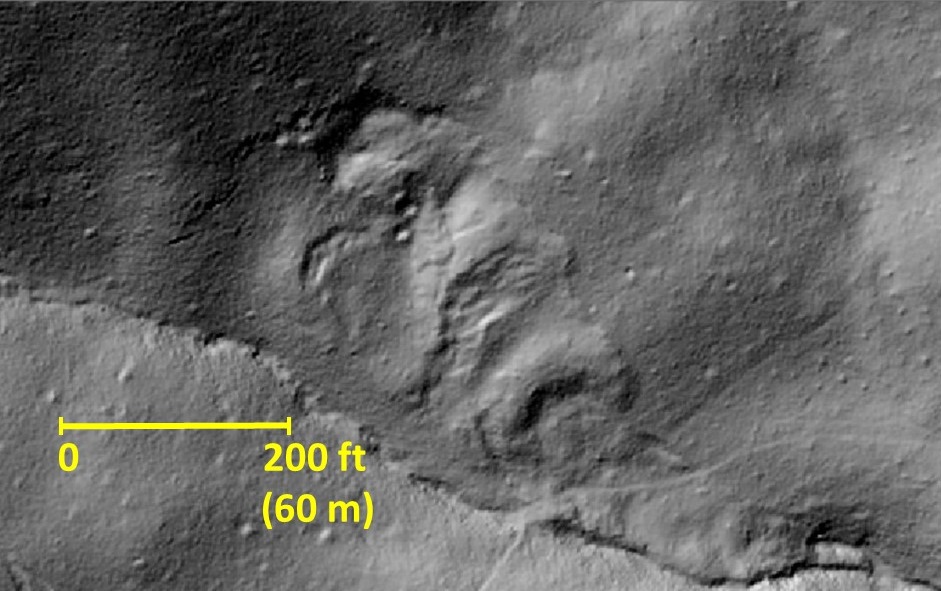
Field investigation revealed another completely forested slide with no clear evidence of recent or ongoing movement. Older trees on the steepest portions of scarps showed some curvature, but, again, this slide looked nothing like what we expected. The slide does maintain several closed sags and depressions, although they too are completely forested. In the photograph below, Aras is standing in one such depression just below the western headscarp of the slide.
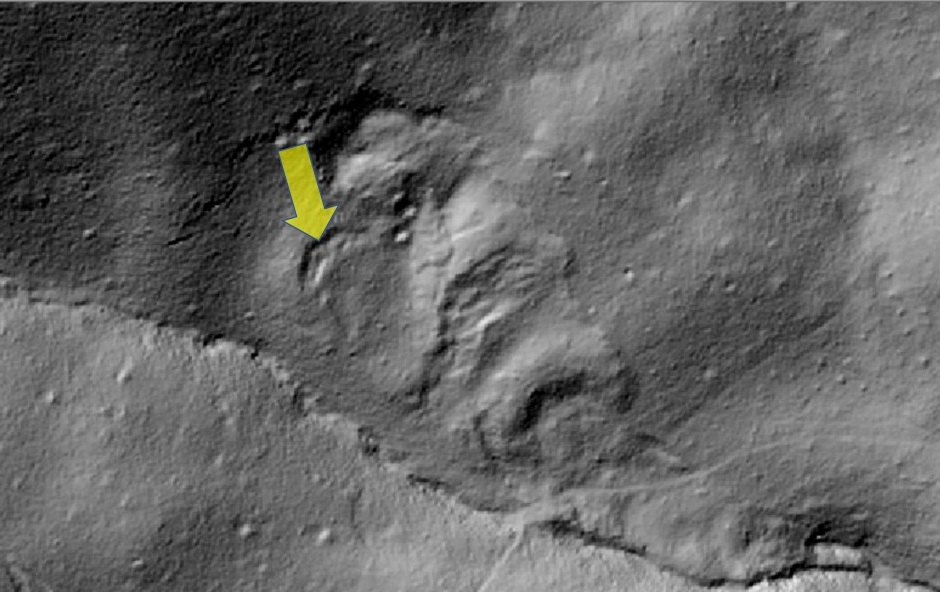
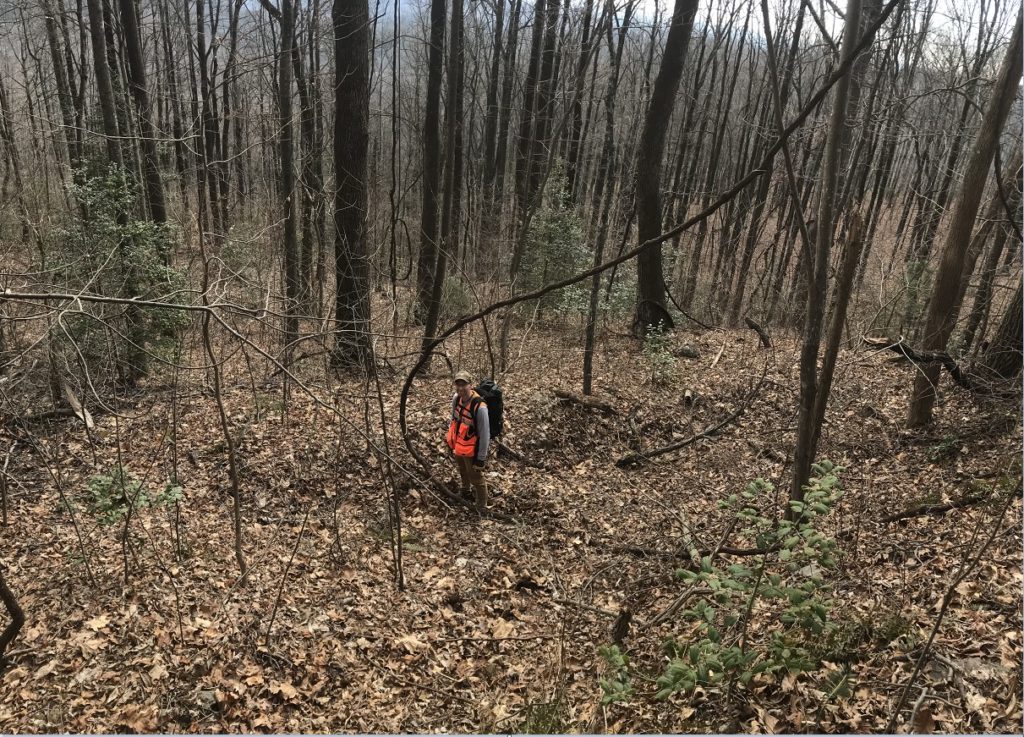
The slope which hosts these two slides is home to several other debris slides, all developed in the schist talus. The schist is well foliated, with fragments maintaining surprisingly planar and smooth foliation surfaces which easily slide past each other and along the underlying bedrock. Other slides are pointed out in the GIF below.
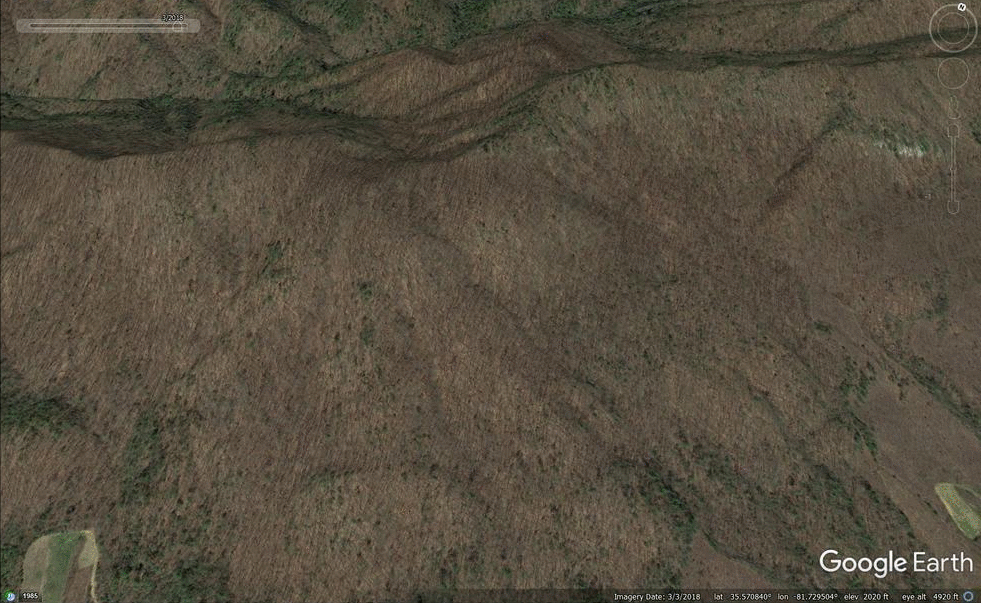
Many are equally well defined in lidar, and are similarly vegetated and unremarkable in the field. We have no constraints on the age of the slides, but they may reflect logging history in the area. The majority of these slopes were heavily and continuously logged during the past ~150 years, with logging in this area clearly occurring within the past 50 years. The slides may have developed after clear-cuts, with the rapid return of vegetation common in the region quickly making the area look less disturbed than it really is.
(DEM imagery captured from QL1 lidar data acquired by NC Dept. of Public Safety, raw point clouds assembled and processed by Corey Scheip of the NC Geological Survey Landslide Hazards Program)
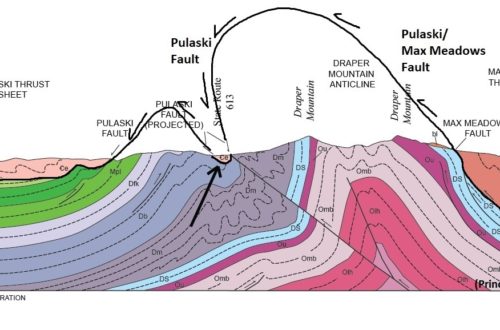
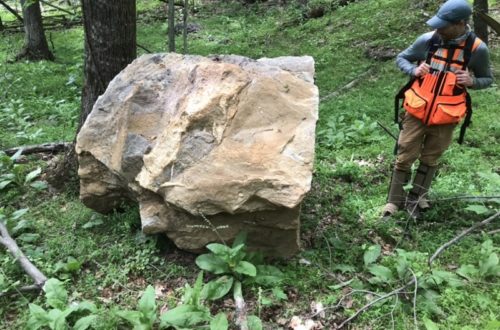
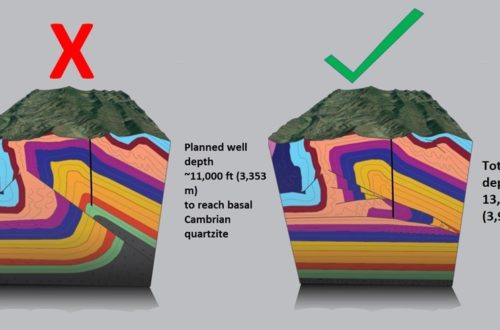
2 Comments
Mark Price
Fascinating. So, I guess we can construe that landslides may have happened or be in progress and we may not even notice?
Philip Prince
May have happened, certainly…the mountains of western NC are absolutely full of them, but the majority occurred in the past, and there is little understanding if many occurred during a particular period (due to major storm events or short-term precipitation patterns, for example) or if they represent the combined results of a long period of landscape evolution. Slow landslides in progress will be the subject of the next post. There are plenty of those, too, and they are often not particularly noticeable unless a house, road, etc. is built on top of one!